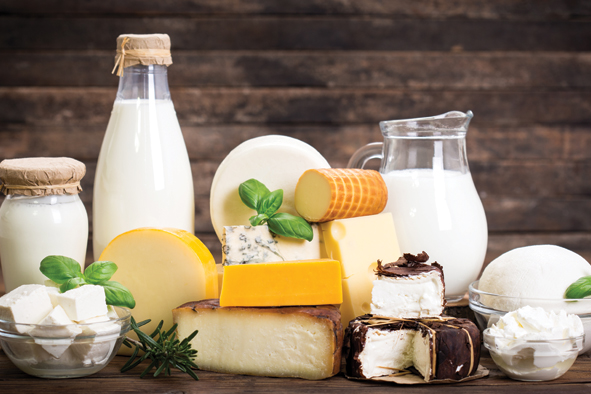Nutrition
HOW TO FOLLOW
A HEALTHY DIET
Following a healthy diet is an excellent way to lower your risk of developing heart disease. Diets high in fruits and vegetables and low in fat and salt can help lower your blood pressure and high cholesterol.

FRUITS AND VEGETABLES
Fruits and vegetables provide essential vitamins and minerals that help our body be healthy. Fiber is also a great benefit from eating lots of fruits and vegetables. Soluble fiber binds to the bad cholesterol in your bloodstream so it is not absorbed by the body. Soluble fiber is found in many fruits and vegetables as well as oats, beans and whole grains.
The USDA recommends that adults get 8-10 servings of fruits and vegetables each day. For more information on the new food plate,
please visit the USDA’s MyPlate website.

LEAN MEAT
Lean sources of meat like fish and chicken are great sources of protein. Try to avoid fried foods like fried chicken because the oils they are fried in have high amounts of saturated and/or trans fats in them.
Aim for two servings of baked or grilled fish each week. Fish is an excellent source of omega-3 fatty acids which has been shown to help lower your blood pressure.
Helpful link: How to Understand and Use the Nutrition Facts Label|FDA

DAIRY
Dairy products are an essential source of calcium in our diets. However, dairy products are also naturally higher in fat. Aim for 3 servings of dairy every day. One serving equals 1 cup of milk, a cup of yogurt or 1½ ounces of cheese.
When you are choosing dairy products, try to choose low fat options. Try drinking skim or 1% milk products for the lowest fat content. Choose fat-free or low-fat yogurt also.

SODIUM
Sodium is a major contributor in the amount of people who have high blood pressure in the United States. High blood pressure is the second leading cause of heart disease and stroke.
Processed foods are a major source of sodium in our diets. Most of the salt we get from our foods doesn’t come from the salt shaker but actually comes from all the processed foods we eat. Processed foods are all of the pre-packed foods we buy at the grocery store like a frozen dinner or canned foods. Processed foods are also what we get every time we go through the drive-through window or eat in a restaurant. It is estimated that people get 77% of their daily sodium intake from eating these processed foods.

FAT
The amount of fat we eat in our diets is a major cause in the amount of people who have high cholesterol in the United States. High cholesterol is one of the leading causes of heart disease and stroke.
Trans fats are one of the worst fats we can eat. They are found in fried foods like donuts and french fries. These foods are very likely to raise your cholesterol level.
When you are choosing processed foods try to pick foods that have lower amounts of saturated fats. Avoid foods that have any trans fats in them. Reading food labels is the best way to know how much fat is in the foods you are buying. Look for foods that have more mono and poly unsaturated fats in them.

READING FOOD LABELS
Here is a great website from the FDA to learn about reading food labels.


